Introduction
Self-directed learning (SDL) is the major educational aim to cultivate resilient and adaptive lifelong learners of the 21st century [1], where the “self” should be vested so that the student can adjust to new situations in the learning process [2]. This requires (a) specific SDL skills [3], and (b) the heightened capability to manage all the learning elements on one’s own, which, however, creates a severe bottleneck for novice students [4]. Because relating several mental items, while also guiding the learning steps, challenges one’s cognitive activities in making sense of the sub-material quickly enough [2,3]. Yet, the latter is the core of efficiency in SDL: task-relevant information processing in working memory, and memorizing respective results in long-term memory [5]. As this process directly depends on the cognitive load per moment - due to the limitations of human cognitive architecture - there is a high need to avoid the cognitive overload of the learner [5]. The problem is that although higher-order cognitive skills are inevitably needed in SDL to lead the learning, understand the material [3], and to memorize while completing assignments at the same time [6-8]. From the developmental perspective such a multilevel cognitive capability cannot be taken for granted in school age students [9,10]. Learners with weaker cognitive skills get more easily confused, not able to resist distractions, and therefore perform worse at memorizing the task-relevant items [11]. This aspect is important especially in novice students, restricting their as quick as in adults “online” processing [7,12]. Yet, most of the SDL suggestions have been given based on adults, while only few studies have been carried out with school-age students [3]. In spite of that, SDL requires more sophisticated learning strategies to be employed by the learners themselves [13]. This need to combine both: (1) domain information what the learner knows and what he/she needs to know to successfully carry out the learning tasks, and (2) procedural information how-to, in order to adjust if needed [5]. All this creates a remarkably higher cognitive load for learners in SDL compared to conventional learning methods, where the teacher orchestrates most of the operations, and therefore the cognitive load of learners is lower while processing the information pre-organized by the teacher [14]. However, if the cognitive load becomes too high, it directly hampers learning quality and the transfer of knowledge [4,5]. These aspects may impact young learners’ reaching a proper final conclusion [2]. On the other hand, differences have been found also in the cognitive control function between boys and girls [10]. In light that SDL lays the ground for other competencies essential for educational growth and lifelong learning, it is reasonable to research this approach and its different corners [13]. Based on the findings given above, the current work concentrates on adolescence-age students’ SDL outdoors using a small-group learning format that has been suggested to lower one’s own cognitive load [15].
Theoretical background
The SDL definition refers from an external (i.e., teacher) to the individual taking initiative (determining learning goals, defining sources, choosing and using appropriate strategies, also evaluating the outcomes) where the control aspect of the learner is crucial to be able to conceptualize independently [3]. The latter, as the essence for change in understanding [2] requires that learners handle several information items concurrently in the focus of their limited cognitive capacity [11]. Thus, SDL needs extra advanced skills of concentration on only the proper (task-relevant) information in the working memory [16] to reach a proper final conclusion [17]. Because students in SDL may experience difficulties in adjusting their learning in a blended learning situation, which is far more demanding, compared to passive listening to teachers’ transmission of well-organized knowledge [1]. While the SDL method is based on simultaneous demand to keep “excerpted” information items in mind while making other operations [18]. It is therefore also defined as complex learning [17] that can be detrimental to “save” information in long-term memory [19]. Hence, one of the main aspects to reduce learning complexity is that the learner needs a close relationship with others (whom to rely on) to foster individual learning through belonging while learning by doing and experiencing [2]. In that way, one can base on the reciprocal effects of the fulfillment of the basic psychological needs for relatedness and autonomy so as to increase one’s own competency [20]. Competence increases through striving to perform a given task (while the experience of effectance increases a sense of mastery); relatedness is based on the feeling of belonging (amongst others); autonomy expects to be the origin of one’s own actions to govern with the choice one’s own behavior [21]. High cognitive loads, therefore, are especially detrimental to learners with weaker or not yet advanced enough cognitive skills [22-24]. As the high cognitive load severely restricts making sense [19]. As a circle back, if unable to understand, it fuels one’s uncertainty instead to cultivate selfconfidence that relates to self-motivation and willingness to learn [3]. This, as a result, diminishes autonomy to govern the next learning steps [20], so hampering to reach the final conclusion set by the SDL multi component assignment [7]. In other words, complex learning – which requires several mental sub-processes – itself may cause cognitive overload [14], because its essence restricts the maintenance of only the sub-information items in a limited working memory focus [22,25].
Executive functions
Executive functions that facilitate direct and coordinate other cognitive processes, encompass a large range of top-down processes: planning, attentional control, and the regulation of action [26]. However, besides to managing skills of one’s own learning required in SDL [6], it also necessitates shifting from one subtask to another (i.e., switching between the learning elements and/or strategies) to constantly update information in working memory [26-29]. This requires “putting on hold” some parts of the information while acting with other sub-tasks at the same time [7]. To be able to do that, the human cognitive capacity limits allowing to process only about 3-4 elements per time [30] become especially evident [23]. As learners with more advanced executive skills are more efficient at resisting distractions (by irrelevant items), they are more efficient in solving the relevant elements [17]. However, learners with lower executive skills are less able to resist distractions (that “conquer” their already limited cognitive space), thus they are also weaker in the processing of the relevant information [31]. This severely constrains weaker students in their sequential online operations and as a consequence their overall SDL progress [24]. Cognitive executive functions (as a controller of working memory in human mental “note-pad”) are therefore needed for two purposes: (a) until processing the right (relevant) response, one needs (b) to resist/inhibit the wrong (irrelevant) ones [28]. This kind of capability is fundamentally important to solve complex tasks [32]. Yet, for school-age students (who are in the stage of human cognition’s prolonged maturity), the SDL approach (that needs the processing of several info-pieces concurrently) sets a considerably higher cognitive demand than conventional learning methods [23]. This can cause their cognitive overload [14], which can lead to inappropriate learning gain because when the working memory is occupied with too many items, it cannot be used at the same time for efficient memorization into the long-term memory [19]. Although some of the cognitive abilities develop earlier, executive functions in particular (the working memory, inhibition, and switching), enabling us to act on the basis of proper choice, not on impulse [28], do not reach their maturity until early adulthood [18]. Those aspects are important especially in SDL, in light that the cognitive abilities do not mature with equal spurts in all children [12]. Prior work, therefore, highlights the need for empirical research on SDL, especially in the context of school-age children, because initial conceptualization of the SDL is focused on adult learners [10], who by their advanced cognitive maturity have also higher readiness for the SDL method compared to young learners [9,26].
Small-group learning
It has been found by Schweder & Raufelder [10] that the group “as a teacher” helps to structure the SDL process - in that way fostering more efficient learning, more active engagement in the learning process, and usage of negotiating [15]. However, the group-work essence is not only talking but making reasoning explicit to others by justifications, explanations, and giving arguments [33,34]. On the other hand, it has been also found that this kind of multitasking can interrupt one’s own processing, and when seeking help it can distract fellow students, which therefore may complicate the whole group’s learning [34]. Especially when the group includes students with different abilities (e.g., some group-mates need more help, extra time, or repeated explanations to understand the topic), when asking for help from fellows, it can disturb the concentration of both more skilled students and those with lower capability [35].
Gender aspects in SDL
The hormonal changes accompanying the adolescence period can be related to individually different developmental dynamics in girls and boys to direct oneself [8]. It has been shown that adolescent girls (compared to boys of the same age) through their greater willingness put more effort into their learning; while boys have been shown to implement lower control strategies than girls [10]. This seems to give an advantage to girls to learn more efficiently, based on the findings that girls generally monitor their own learning more thoroughly using steadier control skills compared to boys [10]. The latter can be related to the aspect that in adolescence the normal maturation rhythm of cognitive control sophistication generally lasts longer in boys compared to girls [36]. Another finding is that girls prefer learning settings that are familiar to them, that is, practiced earlier in terms of not challenging them (repeated and therefore “secure” methods); while boys, in turn, enjoy challenges (to explore around and discover new things hands-on) and thus also keep going to learning settings not practiced before [37]. Boys, therefore, may also like autonomous SDL more compared to girls.
Current work
Involving SDL phases such as planning, gathering evidence, synthesizing, and making final conclusions (Figure 1), we designed the SDL outdoor scenario. The current experiment was organized as a part of a more extensive research study on innovative approaches to learning and teaching outside the classroom supported by technology.

Figure 1: Research design and experiment timeline.
Purpose of the study
Based on the theoretical overview of the heightened cognitive loads accompanying the SDL, this study aims to examine adolescence age students’ autonomous learning through the two lenses: (1) individual learning; and (2) whether the participants’ group-work experiences vary based on individual prerequisite characteristics.
Data collection tools
Data for the study were collected using prior and postunderstanding tests within the learning domain; the individual cognitive capacity measuring task Fruit-Stroop; and group-work reflection questionnaires.
We firstly aimed to analyze the trajectories of learners’ conceptual understandings. For the latter, we used prior- and post-understanding questionnaires, where they were asked specific domain-knowledge questions within the learning topic.
Secondly, we aimed to detect participants’ individual cognitive executive skills (that are especially required in multitasking conditions). For the latter, we used the Fruit-Stroop task by Meixner et al., [38] that we adapted into Estonian. This tool directly shows the learner’s interplay of efficient working memory and executive attention that together enable to resist distractions [17]. Considering that executive functions are found to be largely varying among school-age students [12].
Thirdly, we aimed to analyze participants’ group-work reflections as helping them to share the individual cognitive load [15], or instead as rather disturbing individual concentration [35]. The hypotheses are as follows:
H1: There will be differences in the conceptual understanding trajectories.
H2: Group-work can be perceived differently based on participants’ individual cognitive executive skills.
H3: Reflections on the group work will reveal gender differences.
Materials and Methods
We used the quantitative approach.
Study design and participants
The participants in the study were adolescent school students aged 14 - 16y (8th and 9th graders) from two municipal schools in Estonia. We aimed to investigate the SDL aspects through this age group who, still in the stage of developmental maturing, are vulnerable to high cognitive load. Based on environmental chemistry and bio-indicators, the assignment for the participants was to determine different trees (in grade 8) and to investigate the air quality (in grade 9) around their school. We aimed to investigate (1) learners’ conceptual understanding levels (before and after to detect their understanding trajectories); measuring initially each student’s individual cognitive executive capacity (2) to analyze the low- vs. high-capacity learners’ results; and (3) their reflections by gender.
Inclusion criteria: There was a larger number of students (around 200) taking part in this experiment. However, due to various reasons (e.g., many students had not answered all the questions they were given), the final sample size n = 122 was used for the analysis that included 62 boys (52.4%) and 60 girls (47.6%). Permission was asked from the school director, then the science teacher. Participation in the experiment was voluntary. A letter describing the study (its aim, data management, and confidentiality, ensuring no harm will be caused to the students) was sent to the parents asking for their consent to allow their children to participate in the study. Participants gave their personal consent while they entered the experiment. They were informed that they could quit at any time.
Instruments
Fruit stroop task: We implemented this task as a webbased application of JSPsych [39] used by PCs. Each participant (individually) was consecutively presented (Figure 2) with coloured rectangles and fruits (in respective correct colours; fruits in black and white; fruits in incorrect colours). Respondents were asked to click the colour in which stimuli were printed or the colour which the fruits actually should have as quickly as possible. The principle to act correctly requires suppressing a dominant response (i.e., to click on the colour one sees).
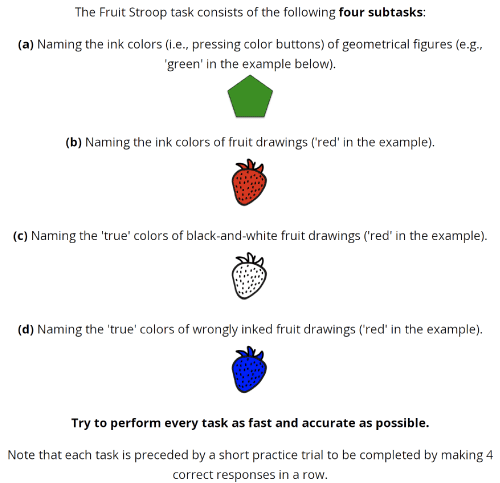
Figure 2: An example of the Fruit-Stroop task (technically adjusted by Paul
Seitlinger).
Time in seconds spent on clicking correct colours, and an interference score (i.e., the wrong answer) was calculated automatically by the task application [38]. A Stroop Effect occurs when an automatic behaviour occurs that interferes with one’s processing - which is related to one’s weaker executive system linked to the inhibitory control that involves also the working memory contribution (because a proper performance necessitates the current rule to be kept in mind) to push the right button [40]. The higher negative value in the Fruit-Stroop task interference score indicates lower inhibition ability (r = 0.78) [38].
Prior- and post-understanding questionnaire
The participant’s domain knowledge (e.g., “What aspects do you presently know about air quality?”) was measured (a) before and (b) after the SDL outdoors. These results were coded by two different researchers according to Heddy et al., [41] operationalization of conceptual understanding about a certain phenomenon from a nonscientific view towards a scientific perspective: “1” - an inaccurate or wrong understanding; “2” - a hybrid conception (mixed: partly accurate but controversial or misconceptions); “3” - an accurate but underdeveloped understanding; “4” - an accurate but not perfectly developed understanding; “5” - a well-developed understanding. Cohen’s kappa = 0.9 (asymptotic standard error was 0.03; approximate Tb was 17.7; p < 0.001) between the two researchers’ estimations on participants’ understanding levels showed good validity (that is near-perfect agreement).
Group-work reflection
There were involved two different values on the group work: “Working in a group helped me to understand the topic better”; “Thanks to group-work, I wanted to study in this lesson”, “My own contribution to group-work was important” composed the Positive index (as an advantage while learning together with others and also contributing to the group-work from his/her own behalf). The agreements within the Positive index statements were counted.
“Group-work interfered with my learning”; “I could have done better on my own with the assignments”; “My group would have succeeded also without me” composed the Negative index (as not beneficial to his/her own learning, and not contributing on his/ her own behalf to the group-work). The disagreements within the Negative index statements were counted.
We also asked the control question: “Did you have good cooperation with your group-mates?” as one’s perceived support offered by the group, and at the same time, their own contribution to group work as well. As the questionnaire was given by a 6-point scale: “I absolutely disagree”; “I somewhat do not agree”; “So and so”; “I somewhat agree”; “Totally agree”; “I do not know”, we re-coded the answers as follows: Agreement (containing “I somewhat agree”; “Totally agree”); Neutral (containing “So and so”); Disagreement (containing “I somewhat do not agree”; “I absolutely disagree”); I do not know (containing “I do not know”). The analysis was conducted using the r-Studio and SPSS statistics programs.
Procedure
The Fruit Stroop was conducted in the everyday classroom and lasted approximately 10 minutes. After that, each participant answered the prior-understanding questionnaire. Next, the participants were divided into groups (consisting of mainly 3 students) and were instructed to go outside and how to use the learning tools they were given for measuring and saving data. In the outdoor assignment, each group of participants followed a predefined path with different location points (using their mobile phones to follow the track as shown in Figure 3) for carrying out in each point their necessary observations and measurements about the environmental conditions.
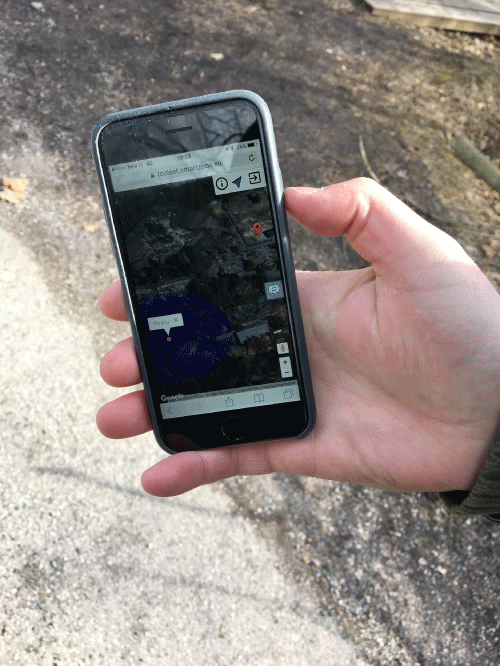
Figure 3: Mobile application to keep track outdoors (to accomplish the SDL
assignments).
After outdoor explorations and completing assignments, the participants came back into their classroom, analyzed the gathered data and made their final conclusion, answered the postunderstanding questionnaire (each student individually).
Results
Comparing firstly all participants’ (N=122) two understanding levels before and after their SDL (Figure 4), the difference (M=1.28 units) between the average of learners’ prior- (M=2.11; SD=1.28) and post-understanding (M=3.43; SD=1.47) was statistically significant by the Paired T-test, t(121) = -9.053; p < 0.001 (p-value = 2.903e-15).
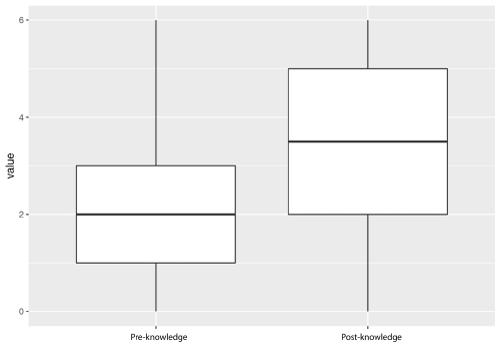
Figure 4: Domain understanding levels (prior and after the SDL assignment).
(A more detailed analysis of the knowledge change aspects is presented in another article by us). Exploring next the trajectory of participants’ conceptual understanding (by calculating one’s postunderstanding level minus his/her prior-understanding score), we see the following dynamics (Figure 5).
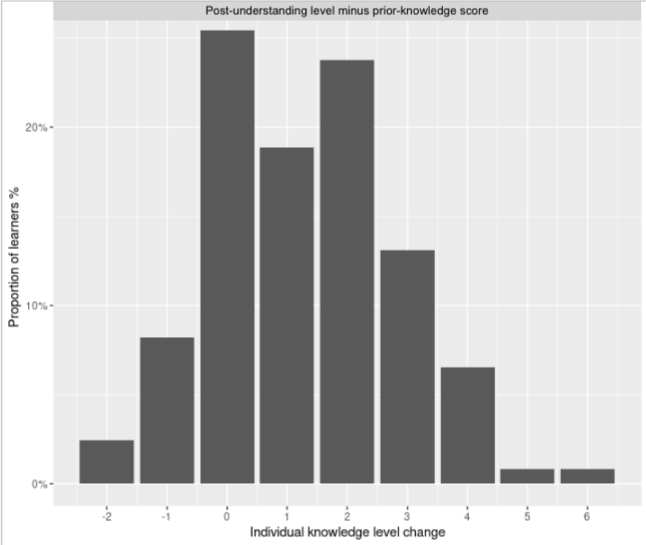
Figure 5: Domain understanding trajectories (from prior- to post-understanding).
We see that although many of the participants improved their final understanding (increasing it by “1”; “2”; “3”; “4”; “5” or even “6” units), still a proportion (25%) of learners kept the same level shown by “0”. However, there also appeared a negative dynamic in some participants´ final understanding (i.e., instead of improving it rather decreased by “-1” and “-2” units, compared to the initial understanding level). To detect which specific contributors might have had an impact on one’s final understanding improvement, we created a linear regression model, where included: the postunderstanding level (DV) and the static variables (IV) such as gender, grade, and Fruit Stroop score. The model was statistically significant (i.e., the selected combination of the features significantly affected the change) with R = 0.065 (Multiple R-squared). Although no strong relationship was found, the descriptive power of the model was 6.5% of the variance (R2 = 0.041), F(117) = 2.732 (on 3) p-value = 0.04697 (p < 0.05), and the gender girl, p < 0.05 (p-value = 0.0218) (β = 0.62234) had a significant predictive value in a higher increase in the post-knowledge (Standard Error of the Estimate = 0.2). H1 (There will be differences in the conceptual understanding trajectories) was confirmed.
Individual cognitive executive profile and group-work reflections
We detected each student’s individual cognitive executive skills according to his/her Fruit Stroop task score (Figure 6). To differentiate high- and low-capacity profiles (with a maximum difference), the following variables emerged: Quartile 1 - the weakest scores in cognitive executive skills, and therefore the participant falling in this range was categorized as a “low-capacity profile” that included 31 participants (the upper cell in Figure 6). Quartile 4 - the highest scores, and the participant falling in this range was categorized as a “high-capacity profile” that included 30 participants (the lowest cell in Figure 6). The Two-Sample T-test showed a significant difference between these two quartile-profiles, t(47.998) = -18.878; p < 0.001 (p-value = 2.2e-16).
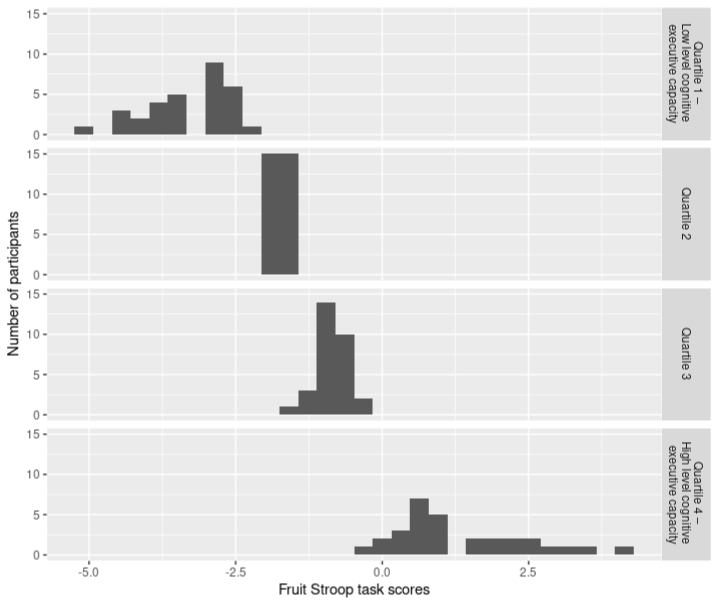
Figure 6: The Fruit-Stroop task scores: Quartile 1: Low-capacity; Quartile 4: High-capacity.
We next included the high- and low-capacity characteristics (of the cognitive executive skills) into the examination of participants’ reflections on their group work through the lens of the Positive and Negative index. On the Positive index (“Working in a group helped me to understand the topic better”; “Thanks to group-work, I wanted to study in this lesson”, “My own contribution to groupwork was important”), there were no significant differences between high- and low-capacity students’ reflections, X2(3, n=61)=1.17, p > 0.05 (p=0.761). This shows that both groups (as low- as well as high-capacity participants) equally valued the group’s benefit for them highly. However, on the Negative index (“Group-work interfered with my learning”; “I could have done better on my own with the assignments”; “My group would have succeeded also without me”), there was a significant difference (Figure 7).
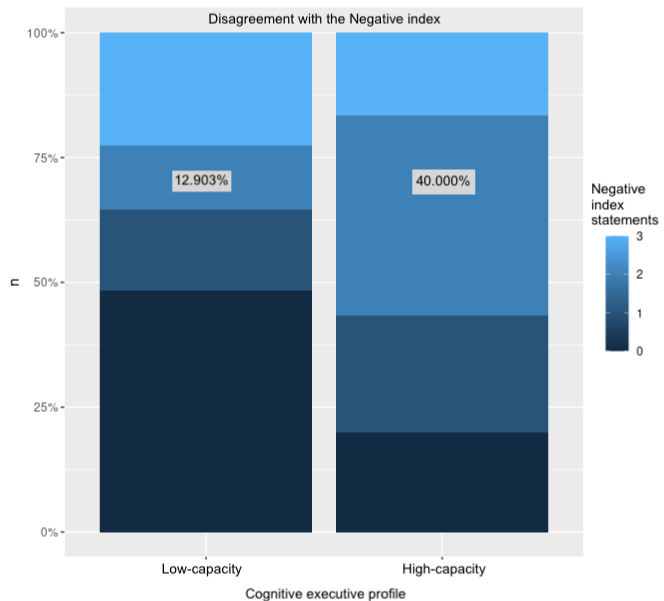
Figure 7: Reflections on the Negative index by the cognitive executive capability profiles.
High-capacity participants remarkably more (40%) disagreed within the Negative index (compared to low-capacity students). The chi-square test revealed that the Negative index and the individual capacity profile were related, X2(3, n=61)=8.51, p < 0.05 (p=0.037). The Cramer’s V = 0.22 (p = 0.036) showed a moderate strength. The sub-statements of the Negative index are shown below (Figure 8).
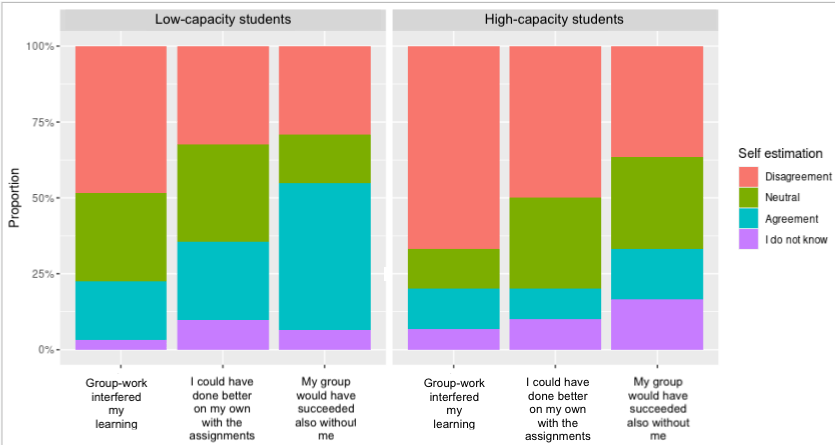
Figure 8: Negative index statements by the cognitive executive capability profiles.
This outcome allows us to say that H2 (Group-work can be perceived differently based on participants’ cognitive executive skills) was confirmed.
Gender and group-work experience
Regarding the Positive index (Figure 9), the chi-square test revealed that the Positive index and gender were related, χ²(3, n=122)=9.25, p < 0.05 (p=0.026). Although the Cramer’s V = 0.16 (p = 0.026) showed a weak relationship, investigating the statements within the Positive index in more detail, it came out that girls (compared to boys) predominantly agreed with the statement “Working in a group helped me understand the topic better” (p < 0.05).
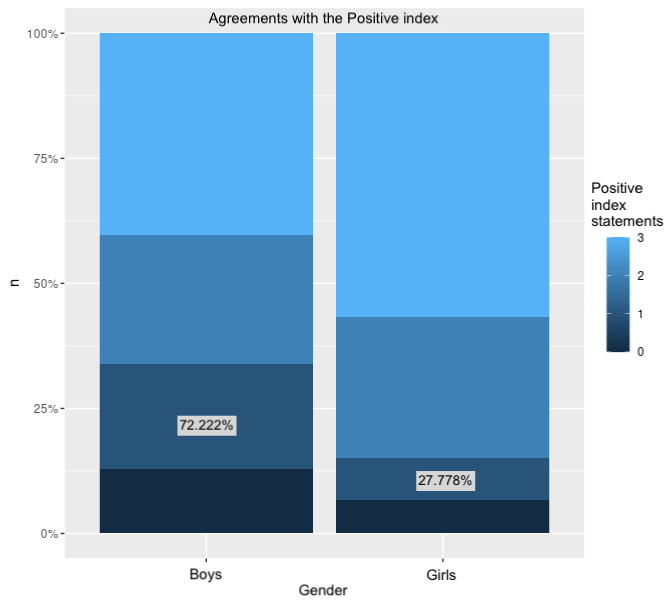
Figure 9: Reflections on the Positive index by gender.
This indicates that girls still needed the support offered by the group to understand the learning topic more than boys. An overview of the sub-components of the Positive index is given below (Figure 10).
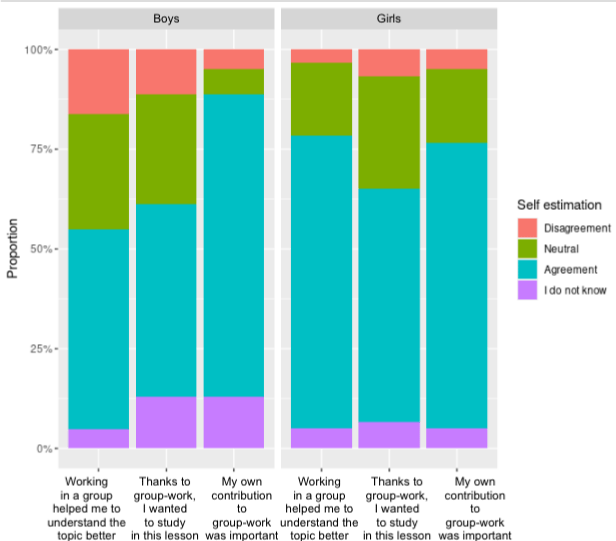
Figure 10: Positive index statements by gender.
Regarding the Negative index (Figure 11), also clear differences between boys’ and girls’ estimations were revealed: girls significantly more (48%) disagreed with the Negative index (compared to boys).
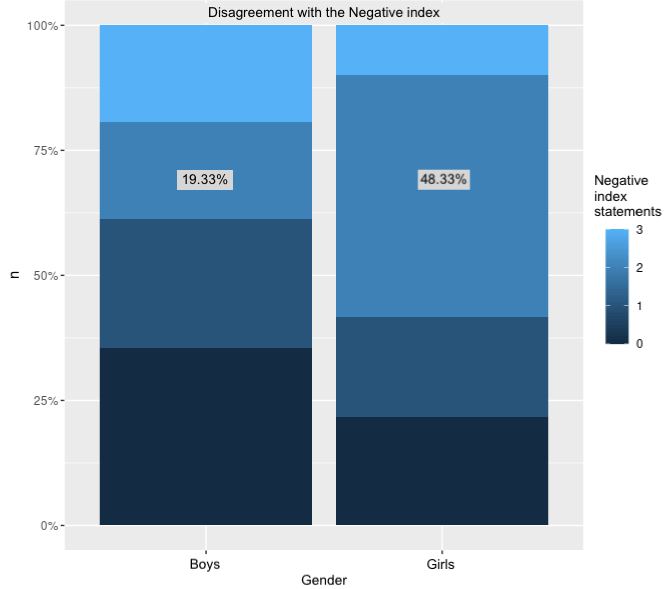
Figure 11: Reflections on the Negative index by gender.
The chi-square test revealed that the Negative index and gender were related, Χ²(3, n=122)=11.91, p < 0.01 (p=0.008). Cramer’s V = 0.622 showed a moderate relationship. The sub-statements of the Negative index are given below (Figure 12).
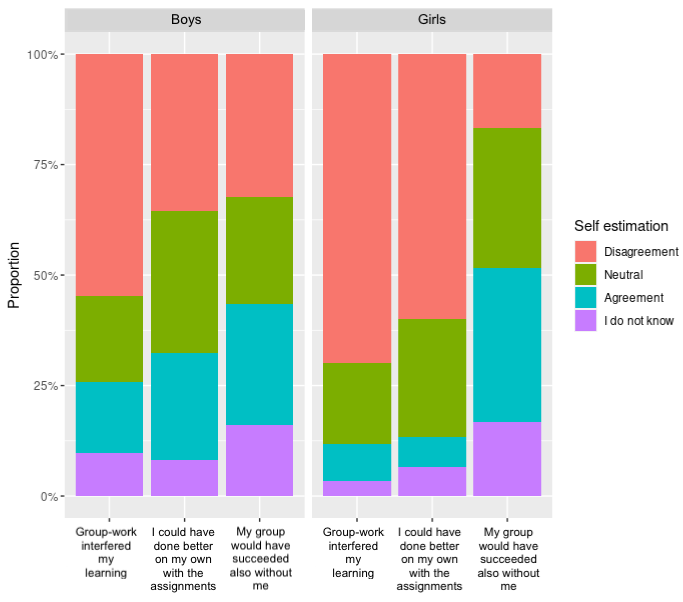
Figure 12: Negative index statements by gender.
Investigating in more detail the sub-statements within the Negative index, it turned out that girls significantly more (compared to boys) disagreed with the statement “I could have done better on my own with the assignments”. The chi-square test revealed, Χ²(3, n=122)=10.273, p < 0.05 (p=0.016). The Cramer’s V = 0.18 (p = 0.008), which (although a weak relationship) indicates that girls seemingly needed the support offered by the group more than boys. This outcome also relates to the control question used in this work “Did you have good cooperation with your group-mates?”, which showed that nearly all of the girls (90%) said they had good cooperation with their group-mates (compared to boys). The chi-square test revealed, Χ²(3, n=122)=10.34, p < 0.05 (p=0.015). The Cramer’s V = 0.54 (p = 0.02) showed a relatively strong association. Based on this outcome H3 (Reflections on the group work will reveal gender differences) was confirmed.
Discussion
This study concentrated on adolescent school students’ SDL outdoors, where we examined the individual conceptual understanding trajectory as a result of their small-group learning format, and the relationships between participants’ individual characteristics and their group-work experience.
Our first finding, which showed that girls gained a higher postunderstanding level (compared to boys) is in line with prior work: adolescent females (compared to males of the same age) have greater willingness to put more effort into their learning, while boys have lower control skills because the maturation of the cognitive control advancement lasts longer in boys than in girls [10,36]. More efficient control thus gives an advantage to girls to monitor their own learning more thoroughly [10], which, in turn, fosters their learning efficacy. This aspect, which in addition confirmed previous findings showing a significant difference between university students’ SDL skills and gender in favor of female students [3], might be the reason also for the aforementioned differences that came out by our experiment results. Based on this we can conclude that H1 (There will be differences in the conceptual understanding trajectories) was confirmed.
Our second finding showed a clear relation between the individual cognitive executive skills´ profile and the group-work experience. Low-capacity (at cognitive executive skills) students did not consider group work as valuable for them. This outcome relates to prior work which describes the SDL as an approach that, because it requires the processing of several info-pieces concurrently, sets a much higher cognitive demand than conventional learning methods [14,23]. Yet, when working memory is occupied with too many items, it cannot be used at the same time for quick sense-making that, however, is the basis of SDL– to sequentially memorize sub-information in longterm memory [19]. Therefore, our outcome can be interpreted that learners with lower-level cognitive executive skills are less able to avoid distractions caused by the multi-level processing requirement accompanied with SDL [7]. Whereas the cognitive difficulty is derived by several different info-items “competing” into the limited working memory focus that hampers processing of relevant information [11]. Thus, for low-capacity students, social noise (induced by group discussions that can distract one’s own mental acts) while he/she tries to concentrate only on task-appropriate info-elements [17] can be felt much harder compared to high-capacity profile students who have an advantage to resist distraction in their group-work (expressed also by their own words on group work as a rather positive experience). Resisting distractions, however, is fundamental in order to avoid attentional “capture” by an irrelevant disturbance [11]. Therefore, the interaction between the working memory and executive control (to sequentially relate info-items to make sense) becomes especially evident [30,38]. This, however, is restricted when working memory is being used to search for sub-solutions thus cannot be used for other functions [19]. This also explains the aspect that there are no resources left to contribute to the group work because individually lower cognitive capacity restricts one’s own processing in SDL [7]. Thus, although it has been suggested to share the cognitive load in a group-work [15], which certainly has some benefits for many students, communication itself (within the group) can be exhausting for other learners, especially for low-capacity students, because it may interrupt their individual processing [35]. Hence, learners with more efficient resistance towards irrelevant (or inhibition of automatic response) are better at solving complex tasks [17]. While those with poor attentional control are thus also weaker in processing [31] and in switching between sub-tasks and rules [7], which directly constrains their entire SDL progress [24]. Based on this, it can be concluded that H2 (Group-work can be perceived differently based on participants’ individual cognitive executive skills) was confirmed.
Our third finding that girls highlighted “Working in a group helped me understand the topic better” and disagreed with “I could have done better on my own with the assignments’’ also relates to prior findings. Girls (who in general are better at tasks previously practiced) often do not perform so well in novel situations requiring unconventional skills and/or a new (not practiced earlier, as it accompanies the SDL context) format [37]. Therefore, learning together with others and receiving feedback from group mates increases one’s feelings of relatedness, which is found to be more important for girls than for boys [8]. The latter additionally confirms our findings mentioned above: as females, in general, prefer to learn in a collaborative environment, social support through their interaction with peers seems to be more important for girls, which is found to be not so important for boys [37]. This indicates that, as girls seemingly needed the support offered by the group more than boys, nearly all of them (90%) according to their own words also had good cooperation with their group-mates (compared to boys) revealed by our control question outcome. It can be concluded that H3 (Reflections on the group work will reveal gender differences) was confirmed.
To sum up, although SDL is an increasingly needed educational approach, and group-work is recommended as a beneficial format [15], our results clearly show that not all group members always benefit at a similar level, as the efficient interplay between the working memory and executive attention that facilitates resisting distractions [17] largely varies among school-age students [12]. Therefore, especially within the SDL paradigm that induces a heightened cognitive load, when learners deal with novel information, we cannot ignore the importance of younger students’ (compared to adults) not yet fully mature executive attention [7,27] and the limits of their working memory [42]. Consequently, in order to enhance personal growth and prepare for life-long learning as the ultimate aim of SDL, education in its holistic meaning needs to connect both: the findings of constructivism as well as cognitive and developmental psychology to relate together important aspects of young students’ SDL [43]. Only in this way autonomous learners can realize their potential that is required to perform in SDL [2].
From the novelty side, we contribute through the aspect that in addition to measuring the experiment variables, we also asked participants’ own experience with their group work. This gives a broader overview of the SDL that is one of the 21st-century educational aims [3,13,44]. In line with prior work, our findings are also important considering the current global pandemic situation, which (a) requires additional precautions (to avoid possible infections in classrooms) and therefore (b) increasingly the SDL approach. Yet, in its implementation, it is nevertheless highly important to ensure the quality of all students’ learning outcomes, despite the different learning settings and also the students’ different individual capabilities. Therefore, all the fine-grained details of the autonomous learning to keep the school-students´ motivation (not overburdening them with too high cognitive load), helping them to become critically thinking citizens able to make sense as of learning, as well as the world around them [2] should be studied further, considering the normal developmental restrictions of the young learners and possible individual differences in their prerequisites for SDL.
Limitations
On the negative side, we had to leave out many participants who did not complete all the sub-tasks of the experiment. As the whole experiment consisted of several subtasks, the participants could get tired, which also could influence their answers. The latter can additionally be related to the complexity of the multitasking situation (to keep in mind several sub-items to complete the entire assignment) that accompanies SDL (e.g., “don’t forget to add the code you created to every sub-task”; “follow the learning path”; “find the answers”; “gather data”; “come back into the classroom on time and make your conclusion”). If we could involve a larger sample size, our results probably would also show stronger results. The latter refers to the need to research further the aspects described in this work more deeply to broaden our understanding of SDL.
Conclusion
This work indicates that there exist remarkable differences in school-age learners’ capability in managing complex tasks accompanying the SDL approach. In light that SDL is an increasingly used trend in schools, its content regarding multi-level cognition has so far been handled little from the school-age learner’s not fully matured yet perspective. This work explored the SDL, its small-group format aspects, and complex learning components in general through the lens of developmental psychology. In line with prior studies, our work confirms the crucial aspects in this: unequal cognitive executive skills among school-age learners (needed in heightened cognitive load accompanying SDL, compared to conventional methods), and gender differences. Based on those outcomes, how to enhance the SDL approach without overburdening school-age students but rather scaffolding their fundamental skills and metacognitive strategies required for quality SDL - usable across life-long learning to adapt, cope and flexibly reorient in the rapidly changing circumstances - remains an open question to be studied further.
Declaration
Informed consent was obtained: All procedures performed in this study were in accordance with the ethical standards of the institutional research committee of Estonia and Tallinn University. The privacy rights were carefully followed, no harm caused, no additional accompanying aspects observed. We have no conflicts of interest to disclose.
This work was partially funded by the European Union’s Horizon 2020 research and innovation program (grant agreement number 669074, project CEITER: http://ceiter.tlu.ee).
Acknowledgments: We are greatly thankful to all participants for their contribution across the current study.
References
- Lee K, Tsai P-S, Chai C & Koh J. Students’ perceptions of self-directed learning and collaborative learning with and without technology. Journal of Computer Assited Learning. 2014; 30: 425-437.
- Du Toit-Brits C. Towards a transformative and holistic continuing self-directed learning theory. South African Journal of Higher Education. 2018; 32: 51-65.
- Tekkol İA & Demirel M. An investigation of self-directed learning skills of undergraduate students. Frontiers in psychology. 2018; 9: 2324.
- Young JQ, Van Merrienboer J, Durning S & Ten Cate O. Cognitive load theory: implications for medical education: AMEE Guide No. 86. Medical teacher. 2014; 36: 371-384.
- Sweller J, van Merriënboer JJ & Paas F. Cognitive architecture and instructional design: 20 years later. Educational Psychology Review. 2019; 31: 261-292.
- Hematian F, Rezaei AM & Mohammadyfar MA. On the effect of goal setting on self-directed learning, achievement motivation, and academic achievement among students. Modern Applied Science. 2017; 11: 37-47.
- Rutherford T, Buschkuehl M, Jaeggi SM & Farkas G. Links between achievement, executive functions, and self-regulated learning. Applied Cognitive Psychology. 2018; 32: 763-774.
- Schweder S & Raufelder D. Needs satisfaction and motivation among adolescent boys and girls during self-directed learning intervention. Journal of Adolescence. 2021; 88: 1-13.
- Reio TG & Davis W. Age and gender differences in self-directed learning readiness: A developmental perspective. International Journal of Self- Directed Learning. 2005; 2: 40-49.
- Schweder S & Raufelder D. Positive emotions, learning behavior and teacher support in self-directed learning during adolescence: Do age and gender matter? Journal of Adolescence. 2019; 73: 73-84.
- Engle RW. Working memory and executive attention: A revisit. Perspectives on Psychological Science. 2018; 13: 190-193.
- Nęcka E & Lulewicz A. Capacity, Control, or Both-Which Aspects of Working Memory Contribute to Children’s General Fluid Intelligence? Polish Psychological Bulletin. 2016; 47: 21-28.
- Labonté C & Smith VR. Validation of a Questionnaire Assessing Students’ Self-Directed and Collaborative Learning with and without Technology in Canadian Middle School Classrooms. Canadian Journal of Learning and Technology. 2019; 45.
- De Bruin AB & van Merriënboer JJ. Bridging cognitive load and self-regulated learning research: A complementary approach to contemporary issues in educational research. Learning and Instruction. 2017; 51: 1-9.
- Paas F & Sweller J. An evolutionary upgrade of cognitive load theory: Using the human motor system and collaboration to support the learning of complex cognitive tasks. Educational Psychology Review. 2012; 24: 27-45.
- Shipstead Z, Harrison TL & Engle RW. Working memory capacity and the scope and control of attention. Attention, Perception, & Psychophysics. 2015; 77: 1863-1880.
- Schwaighofer M, Bühner M & Fischer F. Executive functions in the context of complex learning: Malleable moderators? Frontline Learning Research. 2017; 5: 58-75.
- Davidson MC, Amso D, Anderson LC & Diamond A. Development of cognitive control and executive functions from 4 to 13 years: Evidence from manipulations of memory, inhibition, and task switching. Neuropsychologia. 2006; 44: 2037-2078.
- Kirschner PA, Sweller J & Clark RE. Why Minimal Guidance During Instruction Does Not Work: An Analysis of the Failure of Constructivist, Discovery, Problem-Based, Experiential, and Inquiry-Based Teaching. Educational Psychologist. 2006; 41: 75-86.
- Luyckx K, Vansteenkiste M, Goossens L & Duriez B. Basic Need Satisfaction and Identity Formation: Bridging Self-Determination Theory and Process- Oriented Identity Research. JOURNAL OF COUNSELING PSYCHOLOGY. 2009; 56: 276-288.
- Ryan RM. Approach to Self: Integration in. In NEBRASKA SYMPOSIUM ON MOTIVATION. 1991; 239: 240.
- Best JR & Miller PH. A Developmental Perspective on Executive Function. Child Development. NIH Public Access. 2010.
- Halford GS, Cowan N & Andrews G. Separating cognitive capacity from knowledge: A new hypothesis. Trends in cognitive sciences. 2007; 11: 236- 242.
- Zelazo PD & Carlson SM. Hot and cool executive function in childhood and adolescence: Development and plasticity. Child development perspectives. 2012; 6: 354-360.
- Ecker UK, Lewandowsky S, Oberauer K & Chee AE. The components of working memory updating: an experimental decomposition and individual differences. Journal of Experimental Psychology: Learning, Memory, and Cognition. 2010; 36: 170.
- Lee K, Bull R & Ho RM. Developmental changes in executive functioning. Child development. 2013; 84: 1933-1953.
- Garner JK. Conceptualizing the relations between executive functions and self-regulated learning. The Journal of Psychology. 2009; 143: 405-426.
- Miyake A & Friedman NP. The nature and organization of individual differences in executive functions: Four general conclusions. Current directions in psychological science. 2012; 21: 8-14.
- Roebers CM & Feurer E. Linking Executive Functions and Procedural Metacognition. Child Development Perspectives. 2016; 10: 39.
- Cowan N. Working Memory Underpins Cognitive Development, Learning, and Education. Educational Psychology Review. 2014; 26: 197-223.
- Unsworth N, Redick TS, Heitz RP, Broadway JM and Engle RW. Complex Working Memory Span Tasks and Higher-Order Cognition: A Latent-Variable Analysis of the Relationship between Processing and Storage. Memory. 2009; 17: 635-654.
- Unsworth N, Fukuda K, Awh E & Vogel EK. Working memory and fluid intelligence: capacity, attention control, and secondary memory retrieval. Cognitive Psychology. 2014; 71: 1-26.
- Dagal AB & Bayindir D. The Investigation of the Relationship between the Level of Metacognitive Awareness, Self-Directed Learning Readiness and Academic Achievement of Preschool Teacher Candidates. Universal Journal of Educational Research. 2016; 4: 2533-2540.
- Heflin H, Shewmaker J & Nguyen J. Impact of mobile technology on student attitudes, engagement, and learning. Computers & Education. 2017; 107: 91- 99.
- Alfares N. Benefits and Difficulties of Learning in Group Work in EFL Classes in Saudi Arabia. English Language Teaching. 2017; 10: 247-256.
- Weber VMR, Fernandes DZ, Volpato LA, de Oliveira Bueno MR, Romanzini M, Castro-Piñero J, et al. Development of Cardiorespiratory Fitness Standards for Working Memory Using Receiver Operating Curves in 15-Year- Old Adolescents. BMC Pediatr. 2021; 21: 1-7.
- Liu OL. An investigation of factors affecting gender differences in standardized math performance: Results from US and Hong Kong 15 year olds. International Journal of Testing. 2009; 9: 215-237.
- Meixner JM, Warner GJ, Lensing N, Schiefele U & Elsner B. The relation between executive functions and reading comprehension in primaryschool students: A cross-lagged-panel analysis. Early Childhood Research Quarterly. 2019; 46: 62-74.
- De Leeuw JR. jsPsych: A JavaScript library for creating behavioral experiments in a Web browser. Behavior research methods. 2015; 47: 1-12.
- Archibald SJ & Kerns KA. Identification and Description of New Tests of Executive Functioning in Children. CHILD NEUROPSYCHOLOGY. 2019; 2: 115.
- Heddy BC, Danielson RW, Sinatra GM & Graham J. Modifying knowledge, emotions, and attitudes regarding genetically modified foods. The Journal of Experimental Education. 2017; 85: 513-533.
- Siribunnam R & Tayraukham S. Effects of 7-E, KWL and conventional instruction on analytical thinking, learning achievement and attitudes toward chemistry learning. Journal of social sciences. 2009; 5: 279-282.
- Johnson AP. Humanistic and holistic learning theory. 2012.
- Francom GM. Teach me how to learn: Principles for fostering students’ selfdirected learning skills. International journal of self-directed learning. 2010; 7 29-44.
